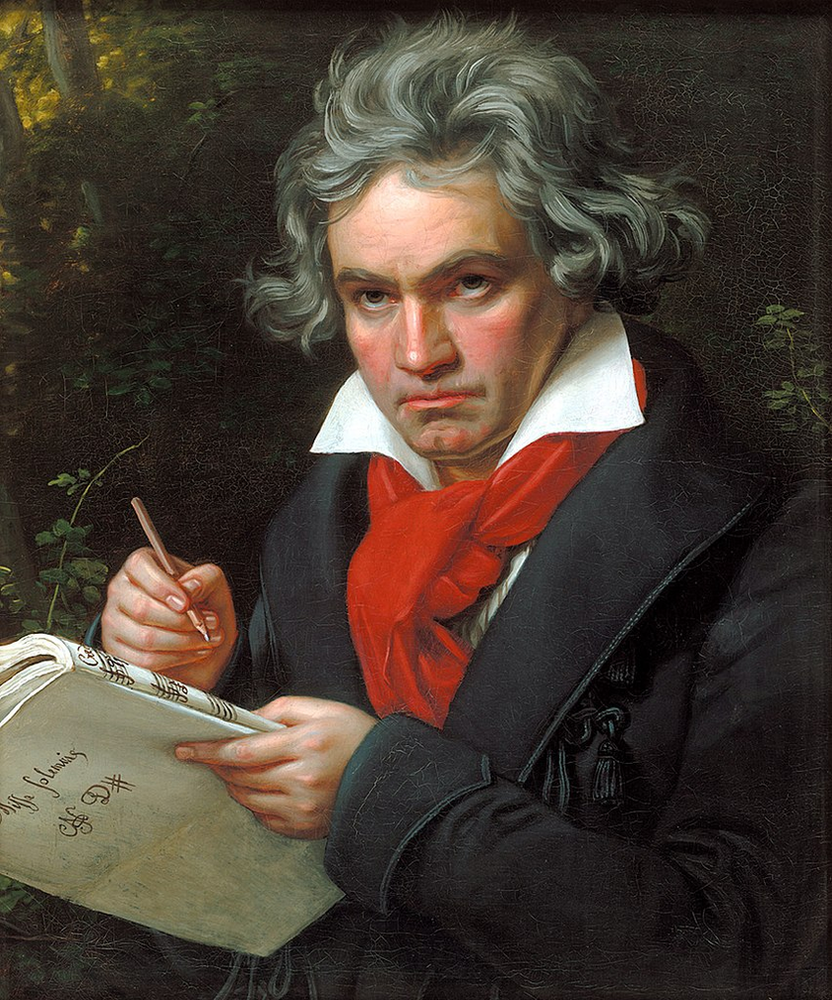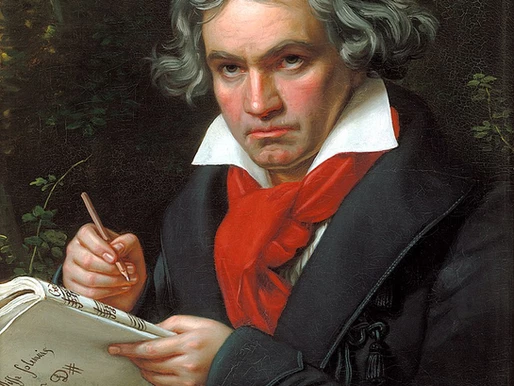Piano Lessons, Uncategorized
The Best of Beethoven’s Piano Sonatas – Top 9
Beethoven Piano Sonatas
Most famous Beethoven piano sonatas

Beethoven Sonatas Ranked
Best Beethoven Piano Sonatas:
Ever wonder which are the Best Beethoven sonatas? Here is our top selection of one of the most famous classical composers:
N°9 – Sonata 17 Op.31 N°3 in D minor
Many of us have thought of how Beethoven composed his brilliant 9th Symphony. In solitude in his room in Vienna, hearing the symphony in his mind, using his piano with the low sounds of the keyboard that is believed by some he could still sense / partly hear. That piano was his
from him beloved Broadwood grand, which he received in 1818 from Thomas Broadwood. Interestingly enough, it seems that the piano manufuctarer John Broadwood & Sons is the oldest established piano manufacturer in the world today, established back in 1728. Beethoven’s Broadwood was not only beautiful on the outside, made of Spanish mahogany, but also produced a beautiful sound
Written in a prolific period of experimentation related to the sonata form, the, also known as ‘Tempest’ Sonata, is one of the most famous ones from Beethoven’s middle period. As we can find in the Pathetique Sonata, also here the three numbers appear linked somehow in the beginnings. The first two movements start with ascending and slow broken chords, and in the third movement, we find the ascending broken chord built up as an accompaniment to the most famous melody of the piece. The D minor tonality sounds dramatic and loaded, mainly in the first movement, where we can also find several links by two (resulting in an anxious texture) and harmony stretching by adjacent and chromatic notes. A resource Beethoven mastered very well and later was developed largely by Wagner.
N°8 – Sonata 7 – Op.10 N°3 in D major
https://www.youtube.com/watch?v=SP12bEnzHbg
Perhaps the first masterwork and one of the best piano sonatas by the composer, this sonata is largely played worldwide and a favourite for concerts and piano competitions, making it one of the most famous piano pieces of all times. The first and fourth movements include most of Beethoven’s typical early resources, such as changes of mode, a swap of roles and textures, broken octaves, accents strange parts of the bar, scales, arpeggios, pedal notes, repetition and building of small particles of music, and sudden changes in intensity. The resulting music is extrovert and unpredictable, in a strict classic architecture and style but exploring several possibilities and using experimental composition techniques for the Epoque.
The second movement deserves a special mention as one of the best slow-movements Beethoven ever wrote. The crawling tempo leads into emotive melodies with an intense layering -the movement features very interesting lines in the extreme voices- and includes a wonderful, painful and desperate coda.
N°7 – Sonata N°26 Op.81a ‘Les Adieux’
https://www.youtube.com/watch?v=sg-p9HWSWjw
The title was given by Beethoven itself, being one of the few examples of the composer arranging names after his pieces. Trying to evocate, with the titles of each number, the situation of saying goodbye to someone loved the absence of this person and the final return at last. Beethoven’s personality as a composer developed into a much more romantic style, rather than the usual classical roots, and we can appreciate this in this sonata in the specific indications of the composer, the structure of themes and melodies, tempo changes, new and experimental harmonic shifts, and a deep, passionate and flexible execution. The sonata, despite being shorter than some other masterworks from this period, demands a very exigent performance, making it one of the most difficult piano pieces of his repertoire. This is possibly one of the best recordings of Beethoven sonatas.
N°6 – Sonata N°29 Op.106 in Bb major
https://www.youtube.com/watch?v=aGVGaehF5E8
One of the most demanding and longest sonatas in music history, possible one of the hardest of Beethoven’s sonatas. The titanic dimensions of this piece result in a very challenging and difficult piece. Loaded with as many notes as possible, the first movement is energic, with plenty of chords and virtuoso passages. The slow movement is an elated adagio, of exuberant beauty and intense instrumental explorations. Towards the end of the sonata, a fugue -with a thrill on top of the theme- explodes. Master technical skills are required, the finger movement needs to be extremely accurate and intense in order to perform the strong character at the speed needed. However, even being one of the greatest pieces ever written and one of the best piano sonatas made by Beethoven, the gigantic duration makes it unsuitable for repertoires and concerts and the technical difficulty keeps it away from most of the pianists. This makes this sonata not as well known and played as many others.
N°5 – Sonata N°32 Op.111 in C minor
https://www.youtube.com/watch?v=8AQ9hZTpgwM
The last sonatas written by Beethoven turned into a very different style. Several tempo changes, more themes and variations and fugues than usual, cryptic architecture, and many expressive indications marks the difference from the previous works. It seems like Beethoven tried to use as many pianistic and expressive resources as he could to ensure the high-standard of his pieces, and to explore the possibilities of the music and the instrument. The introduction of this Sonata reminds us to the Sonata Op.13 due to the tonality of C minor, the dramatic character, and the diminished chords. The main theme sounds sinister and evil, and it’s developed lather in large fugatos and imitations.
The second movement is a theme and variations, based on a simple melody, growing in intensity and in requirements from the performer. The piece finishes in a quiet place, after more than fifteen minutes of elegant contrasts of lights and shadows.
N°4 – Sonata 14 Op.27 N°2 in C# minor
https://www.youtube.com/watch?v=EUn3oo47Z1A
One of the most famous piano sonatas of Beethoven, there’s little to say that was not already pronounced about this Sonata. The first movement is a slow and famous adagio: the main melody remains to the sound of bells and emphasizes the tragic mood, going through an interesting harmonic plan. Uncommon decision to start the work with the slow movement, saving the allegro for the last place. After this solemn first round, a fancy and delicate minuet act as the border between two tragedies.
In a major mode, simple and short, it sounds slightly pastoral, including no surprises. The last movement was, at the moment the sonata was premiered, one of the most difficult pieces written by Beethoven. An exigent performance is necessary both technically and musically to play properly a large number of fast notes in wide extensions with rhythmic precision. Unlike many other composers, Beethoven could enjoy during his life the great success of this piece both in the audience and in the musical press.
N°3 – Sonata 23 Op. 57 in F minor
https://www.youtube.com/watch?v=iYqQBIsackM
Between 1803 and 1806 Beethoven experienced one of his most inspired moments as a composer, writing the Piano Concerto N°4, his only Violin Concerto, the Triple Concerto, the Third and Fourth symphonies, three quartets and three sonatas, including Op.53 ‘Waldstein’ and this one, Op.57, ‘Appassionata’. A nickname that Beethoven disliked. It’s also known the composer chooses the tonality of F minor to play, in the first bars, the lowest notes he had on his piano, giving to the piece a mysterious and dark character. The intensity grows and grows after a decisive break and detonates with fireworks.
The second movement allows us some calm, with an almost funny and carefree nature, this number and the third movement are linked and one leads into the other, something Beethoven did extensively. The final allegro is the most demanding number, in which we repeat, develop, uncoil and twist the main theme several times, stockpiling stress and vertigo until the end. Definitely one of the best of Beethoven’s piano sonatas.
N°2 – Sonata 21 Op.53 in C major
https://www.youtube.com/watch?v=dL0JLNt_3EE
Perhaps the second most difficult sonata, obviously behind the N°29 – ‘Hammerklavier’ Sonata. The demanding finger movements in both hands across more than thirty pages and half an hour of duration demands a lot of accurate practice. The transitions are sudden and we need to settle our hands in new positions, with jumps and shifts, in a minimal amount of time. A wide diversion of arm and forearm movements are also needed to make the piece sound with all the power needed. The development of the first movement, as well as the explorations between the themes of the third one, goes through almost every possible tonality with a dense amount of notes. Again, the second and third movement appears connected.
Despite its amazing structure, texture, and the use of an immense selection of piano resources, the third movement is a bit too long and repetitive, before ending in a surpassingly fast coda in which we face a major trouble: the pianissimo octave glissandos, a resource that may not work in many pianos due to the hardness of the keyboard of the modern instruments. All the alternatives to play this without sliding through the keyboard are extremely difficult. All the necessary skills to perform it, and it’s extrovert and virtuoso nature, makes this sonata one of the favourite to be performed in concerts and competitions.
N°1 – Sonata 8 Op.13 in C minor
https://www.youtube.com/watch?v=HNlCjWUGRHw
Probably one of the most famous classical piano pieces and one of the best Beethoven sonatas.
The importance of Beethoven’s Moonlight Sonata for Piano in music history is elevated, its existence has incentivized large musical production. The aftermath of this Sonata helped the transition from the Classical period to the Romantic period to happen. With a deep introduction, the most wonderful themes and motives -and Beethoven’s greatness in the architecture-, the first movement is a complex and demanding piece. The octave tremolos in the left hand, the high speed and the powerful touch needed are difficult obstacles to solve in order to play it.
In all three movements of Beethoven’s Piano Sonata 8, we can find similar intervals and pattern of ascending notes in the themes, linking the three numbers with the same ideas. The second movement is one of the most delicate, tender, and beautiful pieces ever written, leading into a Rondo, with a very famous melody and a quite interesting and sentimental contra punctual development towards the middle. After some dubious and hesitating musical direction, the piece finishes suddenly and violent, in the composer’s best style.
BONUS SONATA
Piano Sonata No. 18 in E♭ major, Op. 31, No. 3
https://www.youtube.com/watch?v=P-Q5aBAw-T4
This evocative sonata recalls the topic of HUNT in some of its motives. Daniel Barenboim registered a magnificent interpretation full of extravagant dynamics and sonorities. Enjoy it!
Some of its particularities include:
- A very traditional language, reminding C.P.E. Bach
- A Scherzo which is unusually written in 2/4 and sonata form as opposed to 3/4 and in ternary form.
- Its trio is the seed for the famous 1874 Variations sur un thème de Beethoven, Op. 35, for two pianos.
On another hand, the famous Fur Elise written by this genius is now analyzed by WKMT Team:
https://www.piano-composer-teacher-london.co.uk/post/fur-elise
Learn what are the five most famous Operas by Cavalli:
https://www.piano-composer-teacher-london.co.uk/post/francesco-cavalli-five-most-famous-operas
If you are a prospective composer or a producer, so a Beethoven of nowadays, you certainly need a MIDI keyboard. Below a useful link
#Beethoven #LudwigVanBeethoven #Beethovenmusic

